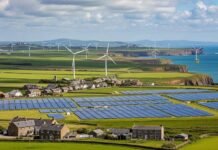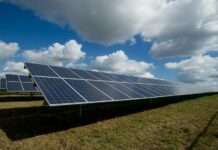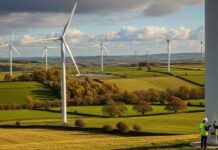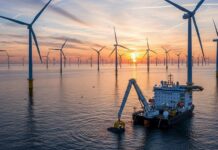Due to an aggregate capacity of 15 GW at present under construction, India is poised to witness quite a prominent increase when it comes to its hydroelectric power potential, thereby targeting a rise from the current 42 GW to a much-impressive 67 GW by 2031-32, hence marking a surge of more than 50%.
It is no surprise that the country happens to be on the cusp of massive transformation in its energy sector, with Ministry of Power going ahead with the announcement of the progress of hydroelectric power projects, which are all set to substantially augment the nation’s renewable energy capacity.
As per a press release by the Ministry of Power, the Indian Meteorological Department- IMD has gone on to predict quite a favourable monsoon in fiscal year 2024-25, which is anticipated to contribute largely to the elevation of the water reservoir levels.
Especially crucial happens to be the contribution from the snowmelt in the Himalayan region, which goes on to act as a vital resource when it comes to hydropower projects.
Consequently, any surge in temperature leading to a rise in snowmelt will go on to further push the capacity of these kinds of projects, according to the press release.
It is well to be noted that Pumped Storage Projects- PSPs which are often referred to as water batteries, are also gaining prominence in India’s energy transition.
These projects, which are looking to offer greater inertia as well as balancing power to the grid, happen to be under construction at present with an aggregate capability of 2.7 GW, while another 50 GW happens to be in various stages of development.
It is expected that PSP capacity will indeed go ahead and surge from 4.7 GW to almost 55 GW by 2031-32.
But the recent decline in hydropower generation throughout 2023–24 has raised concerns. While there has been lower rainfall in the southern region, which contributed to reduced energy generation, the scenario was pushed further due to natural disasters impacting major power stations across the northern and eastern regions, said the press release.
Flash floods across the state of Himachal Pradesh as well as the Eastern region disrupted the functioning, thereby leading to quite a significant decrease in the generation of hydropower.
Addressing concerns pertaining to the fluctuating hydrology of river basins, experts have gone on to stress the variability of rainfall patterns and, at the same time, caution against assuming future trends that are based solely on past data.
Despite challenges such as these, the government goes on to be optimistic about replenishment when it comes to such reservoir capacities, specifically with the IMD’s forecast of a promising monsoon in FY 2024-25.
This much-expected increase in rainfall could potentially go on to reverse the trend of declining reservoir levels that were experienced in the previous year.
Underscoring the important role of hydroelectric power across India’s energy landscape, officials have gone on to push its significance when it comes to offering essential peaking support as far as the electricity grid is concerned, hence enhancing the reliability as well as the resilience of the power system.
It is well to be noted that the development of hydropower projects has gone on to face many hurdles in recent years, which range from natural calamities to even contractual disputes.
But in sync with India’s commitments under the COP Paris agreement, the government has gone on to adopt a kind of a proactive approach towards hydropower development in order to accelerate its progress.
The fact is that India’s renewable energy capacity has gone on to witness remarkable growth, which has even surpassed the targets set at the COP 21 Paris Summit.
The commitment of the country to reducing emissions intensity and, at the same time, increasing the share of non-fossil fuel-based energy resources goes on to highlight its dedication as far as combating climate change is concerned.

































